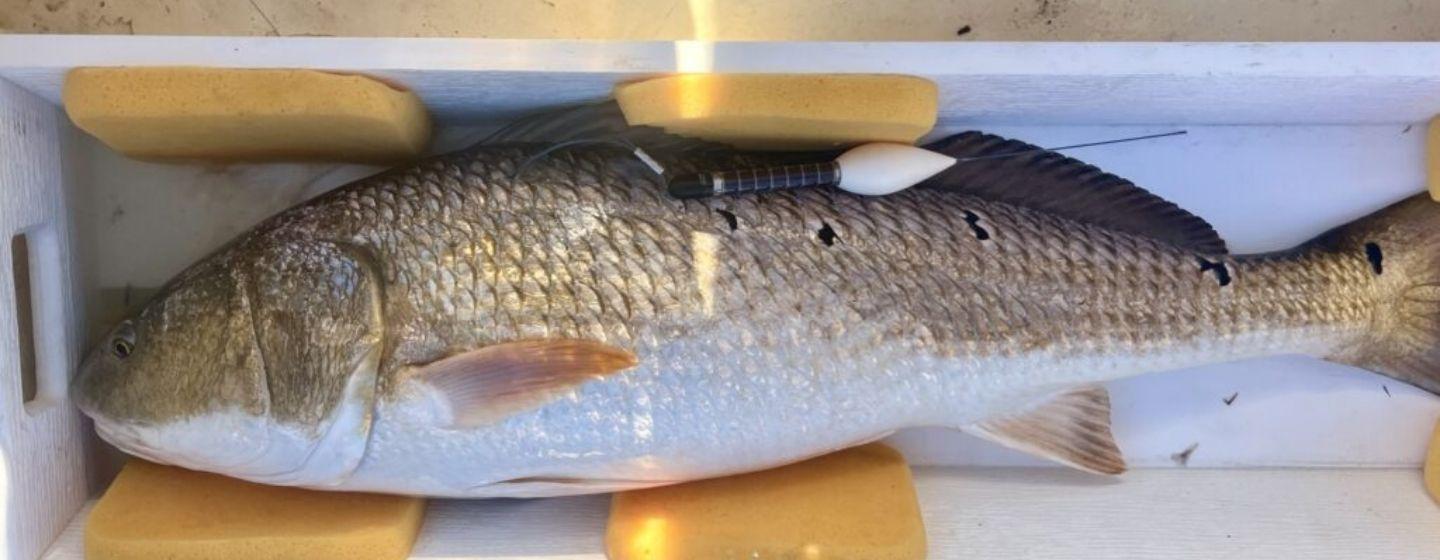Discovering the Secrets of the Red Drum


Red drum (also called channel bass) is a popular fish for anglers, which means it’s economically important.
The red drum is also North Carolina’s official state saltwater fish. Despite all that, not much is known about the red drum, including where it spawns, travels and spends most of its time or even where it migrates..
A two-year study hopes to change that.
The North Carolina Division of Marine Fisheries and the North Carolina Marine & Estuary Foundation have partnered on a new satellite tagging study to learn more about the red drum’s habitat preferences and life cycle.
“This study represents a significant advancement in Red Drum research for North Carolina,” said the foundation’s executive director Chad Thomas on its website. “We are proud to financially support this vital research, which will provide invaluable data for the Division for years to come.”
In the first year of the study, 34 mature red drum (fish measuring more than 32 inches in length) will be tagged with solar-powered satellite tags, which measure magnetics, light and water temperature.
Marine tech company Desert Star Systems designed the tags to send daily transmissions from the fish to ARGOS satellite computer software that tracks its locations.
Each tag is about seven inches long and weighs less than 1.5 ounces. The tags are for one-time use and will pop off the fish at a programmed date. The tags on the first fish in the program will pop off after three months. Tags on fish caught later will pop off after 12 months to provide more large-scale tracking of red drum movements along the coast to identify spawning location and offshore migration.
Data about the fish is collected until the tag detaches. Once the tag pops to the surface, it will pinpoint its last location and then also send an accurate range of temporal and spatial data from the fish.
“North Carolina provides essential Red Drum stock monitoring data not only in the NC Division of Marine Fisheries annual fishery management plans but also for the whole of the Northern Stock in Atlantic States Marine Fisheries Commission stock assessments,” said Cara Kowalchyk, the division’s red drum project lead biologist. “This project addresses high-priority research need for estimating adult population movement rates.”
The second year of the study will utilize the data gathered in the first year to expand the project. Two groups of mature red drum will be tagged in the open ocean: one group north of Cape Hatteras and another south of the cape.
“We commend the Division for their innovative research approach and eagerly anticipate sharing the data collected,” Thomas said. “This study not only deepens our understanding of Red Drum but also aims to boost public engagement through migration pattern updates and targeted outreach efforts.”
Watch this Sci NC story to learn how fish tagging helped scientists understand how coastal fish populations interact with oyster reefs.
NC scientists get creative to study the impact of oyster farms on vulnerable fish habitat.